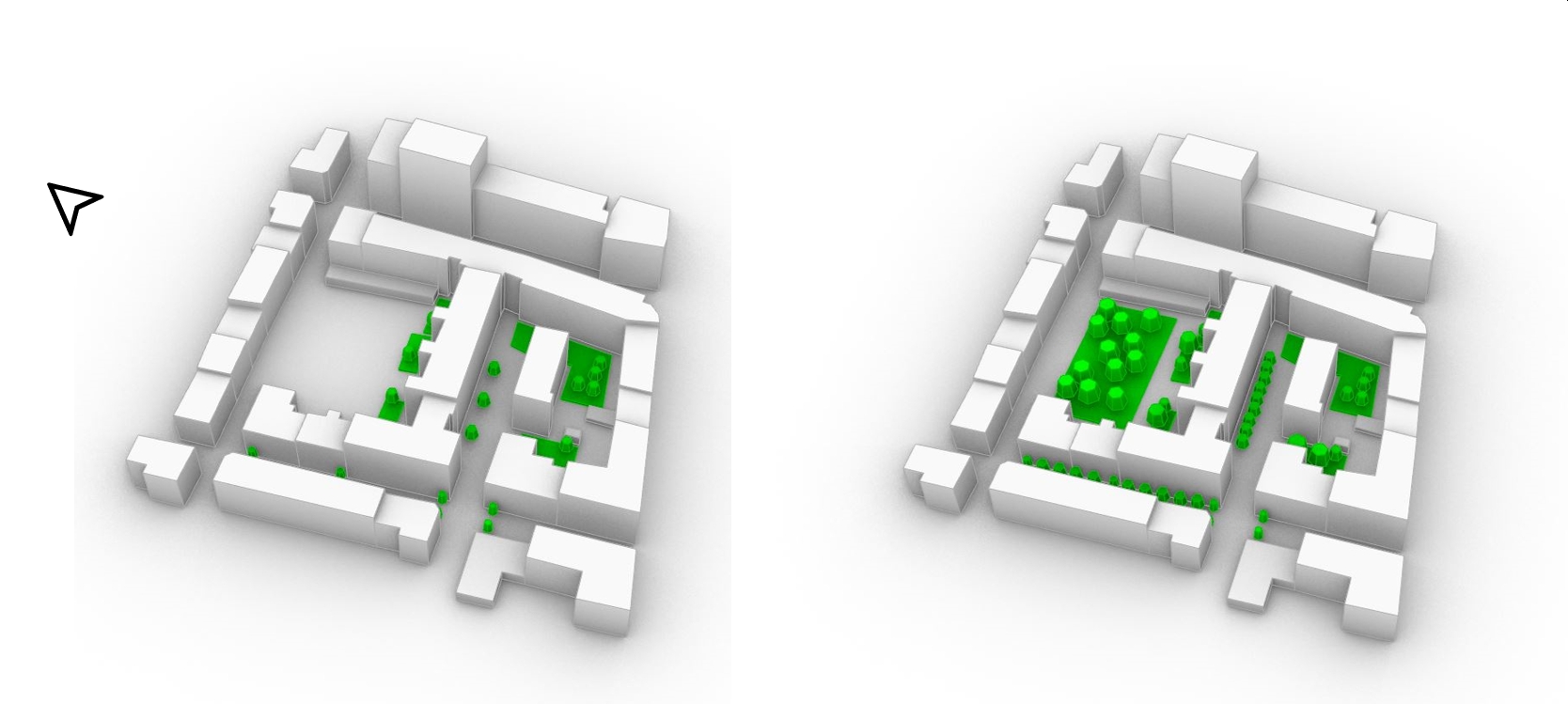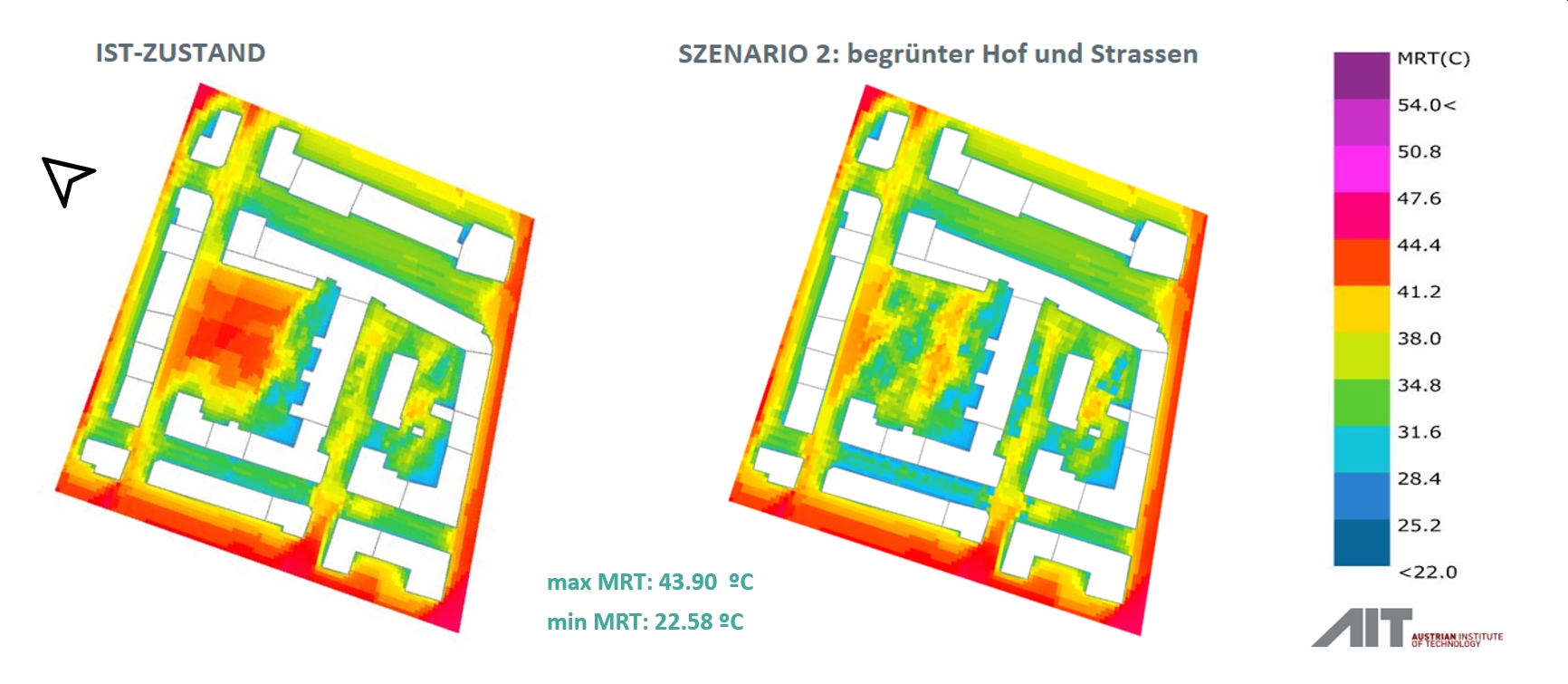The extremely hot summer of 2019 clearly demonstrated the need for climate assessments and corresponding adaptation measures in our cities in order to maintain a high standard of living. The routine analysis and processing of climate data and information is essential for developing sustainable strategies and operative measures in modern cities. This, in turn, depends upon effective and intelligent digital platforms and IT systems which allow land use planning, architecture, traffic management and energy supply to be designed for all areas of our lives in an era of climate change.
The CLARITY (Integrated Climate Adaptation Service Tools for Improving Resilience Measure Efficiency) project, coordinated by the AIT Austrian Institute of Technology and funded by the EU as part of Horizon 2020, is developing innovative digital tools and services which can be used to analyse and assess the negative impact of climate change on Europe’s cities. The 17 European partners involved in the project include Austria’s AIT (Center for Digital Safety & Security and Center for Energy), the Austrian Central Institute for Meteorology and Geodynamics (ZAMG, Vienna), Smart Cities Consulting (SSC, Vienna), and the City of Linz.
“The CLARITY project is creating smart IT systems which will make climate risks and the corresponding adaptation measures easier to evaluate, with the aim of supporting modern and targeted urban planning. The developed solutions are intended both for climate experts and users in administration and urban planning,” explains Dr Denis Havlik, project manager and expert for crisis and disaster management at the AIT Center for Digital Safety & Security. A tool developed by AIT guides users through a structured process which supports them in identifying risks and evaluating countermeasures. This allows climate-relevant indicators to be examined and evaluated in order to assess the positive impact of targeted adaptation measures designed to reduce local effects on cities, such as heat islands or areas of potential flooding.
Climate simulations in four European key regions
Together with the city of Linz, which has set itself the ambitious goal of becoming Europe’s ‘climate capital’, and an international partner network comprising Germany, Italy (Naples), Spain (Madrid) and Sweden (Stockholm, Jönköping), the CLARITY project has undertaken local and citywide climate simulations for current and future climate periods. The results obtained for the inner city of Linz show for example that the annual number of tropical days (temperatures of 30°C and above) will rise to an average of 25 days during the period 2021–2050, compared to around 10 days during the period 1971–2000. Unless appropriate countermeasures are taken, the average annual number of tropical nights (temperatures of 20°C and above) is also forecast to rise from 18 to 34 days during the same period of time.
In order to reduce increasing urban heat stress, the AIT Center for Energy used micro-climate simulations of three different city districts in Linz to demonstrate how these areas might be expected to develop, both with and without adaptation measures. The research was led by experienced climate expert Dr Wolfgang Loibl from the Digital Resilient Cities research group. “Linz is growing, and the city is overheating as a result of the increasing urban density. The micro-climate simulations at three locations in Linz have shown us that targeted and effectively placed adaptation measures, such as unsealing the ground, greening and planting trees, can significantly cool the urban climate and combat overheating. Climate simulation models serve as the basis for assessing the impact of climate adaptation measures. These models are usually either unavailable to the population and urban planners, or require specific expertise in order to apply them and evaluate the results,” explains Dr Wolfgang Loibl.
The calculations and simulations are based, among others, on the EMIKAT IT system developed at the AIT Center for Digital Safety & Security which has been used for many years by Austria’s regional governments as an established solution for calculating emissions and energy balances. Calculations based on a broad range of data now make it possible to simply evaluate the climate-relevant risk factors and to objectively assess the countermeasures on the basis of existing data. This also takes into account specific factors such as population distribution within the different city districts. Finally, the calculations and simulations can be used to generate automated reports for decision-makers.
Easily deployable climate services for cities and local authorities
The CLARITY project is scheduled to run until August 2020. The developed scenarios and climate services will then be available to climate experts and urban planners, as well as interested cities, via the platform established during the project - https://myclimateservices.eu/. The climate services can also be easily used by other cities and local authorities to quantify the impact of climate change on their urban areas, and to objectively assess a variety of countermeasures. Since June 2020, webinars with further information on this topic are also provided for experts and interested parties at https://www.gotostage.com/channel/climate-adaptation and can also be streamed from this page.
Further information
EU project website: https://clarity-h2020.eu/
Center for Digital Safety & Security / Crisis and Disaster Management https://www.ait.ac.at/cdm/
Center for Energy https://www.ait.ac.at/energy/
More Details at https://myclimateservices.eu/ and https://myclimateservices.eu/en/scenarios/linz-austria-suffers-from-heat-waves
"In the Clarity research project, we carried out climate simulations for summer and hot days in specific urban areas and compared scenarios without and with greening measures. The graphic shows fictitious courtyard and street greening measures of an inner-city building block in Linz. The comparison with and without fictitious greening illustrates temperature differences of up to 15°C in the courtyard in the range of the average radiation temperature, and differences of up to 9°C in the streets and buildings shaded by trees during the day."
Image credit: AIT
Contact
Michael W. Mürling
Marketing and Communications
AIT Austrian Institute of Technology
Center for Digital Safety & Security
T +43 (0)50550-4126
michael.muerling(at)ait.ac.at I www.ait.ac.at
Margit Özelt
Marketing and Communications
AIT Austrian Institute of Technology
Center for Energy
T +43 (0)664 88390660
margit.oezelt(at)ait.ac.at I www.ait.ac.at




